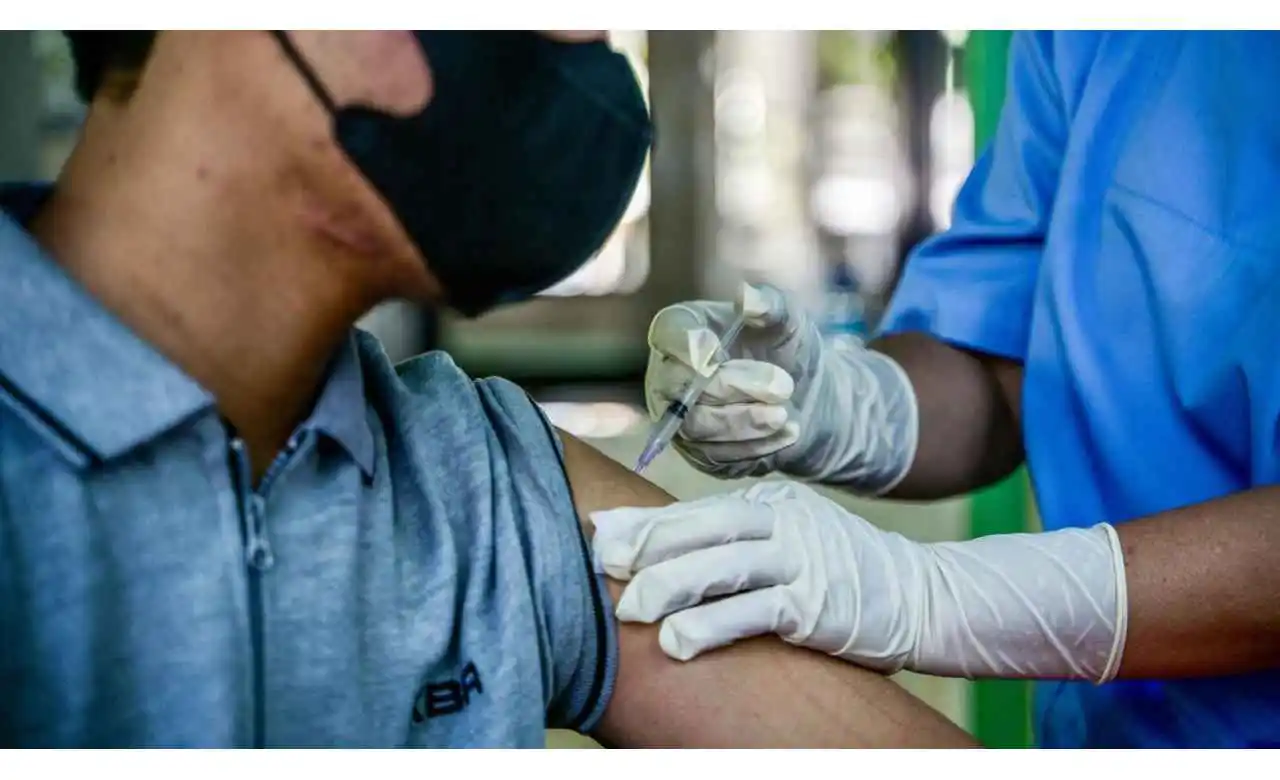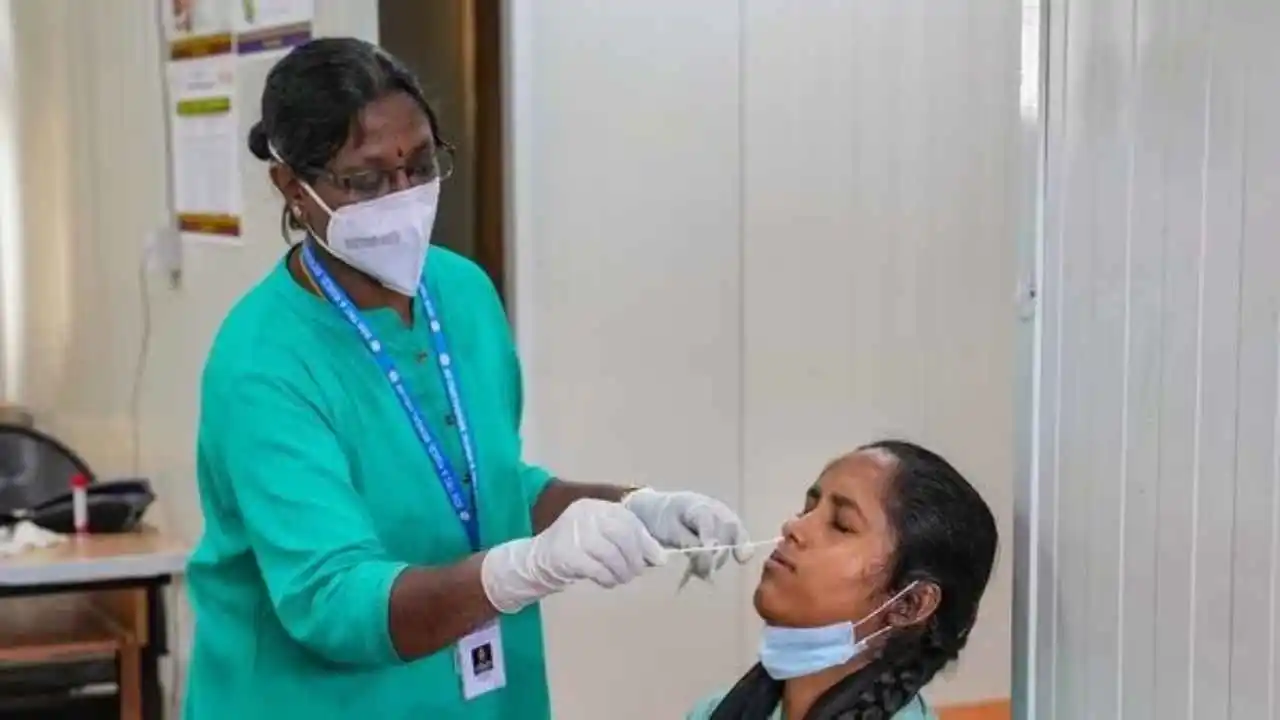Health
BENTA: What is it? All you need to know about the disease that infected a 7-month-old in Bengaluru
Recently, a seven-month-old infant in Bengaluru, Vijayandra, has been diagnosed with BENTA disease. This disease is extremely rare and serious. Worldwide, only 14 children have been diagnosed with the disease, out of which, Vijayandra is the youngest.

Since Covid-19, the entire world in alive anxious breaths to live a healthy life. People are getting more affected by health issues and diseases, and this fear becomes more threatening when the news of deaths, as well as young lives getting affected reaches us. Recently, a seven-month-old infant in Bengaluru, Vijayandra, has been diagnosed with BENTA disease. This disease is extremely rare and serious. Worldwide, only 14 children have been diagnosed with the disease, out of which, Vijayandra is the youngest. Vijayadra’s case is the world’s first BENTA case to be detected at such an early stage in terms of age and severity.
According to the DKMS BMST Foundation India, the toddler’s life can only be saved by blood stem cell transplant. It has also been reported that the Bengaluru-based blood stem cell registry has been searching for a match for the child.
What is BENTA disease?
BENTA disease is a rare immune system genetic condition. BENTA is caused by germline heterozygous gain-of-function mutations in the gene that produce B cell growth with NF-B and T cell anergy CARD11. It is characterised by excessive amounts of particular immune cells, starting since childhood.
B-cells are a kind of immune cell found in the bone marrow, and their frequency is more than usual in this case. T-cells are immune cells that mature in the thymus, a delicate organ under the breastbone in the upper chest. NF-B is a protein complex that regulates gene expression, or how many genes are turned on or off. Anergy is an immunological response to foreign chemicals that is less-than-normal (T cell).
What are the symptoms of BENTA disease?
An enlarged spleen, swollen lymph nodes, immunodeficiency, and an increased risk of lymphoma, a kind of cancer, are all symptoms of BENTA illness.
Spleen enlargement (splenomegalia) and recurrent ear, sinus, and lung infections are the most common symptoms early in life.
Who are more likely to be infected with BENTA disease?
An individual is born with two copies of the CARD11 gene, one from the mother, and the other from the father. Children of people with the CARD11 mutation have a 50% chance of inheriting the mutation. For a person to develop BENTA disease, just one of the two copies of CARD11 must be abnormal.
Treatment of BENTA disease
Currently, there is only a limited therapy option for BENTA disease. Infections and symptoms of monoclonal or oligoclonal B cell growth, which might suggest B cell malignancy, are constantly observed in patients. Splenectomy is unlikely to diminish B cell load as three patient’s peripheral blood B cell counts increased dramatically after the surgery. Immunosuppressive medications, such as B cell-depleting therapies like rituximab, have yet to be proven beneficial in the treatment of BENTA illness.
Health
India registers 313 new Covid cases, active cases reach 2,041, 3 deaths recorded in last 24 hours
The currently available data suggests that the JN.1 variant is neither leading to an exponential rise in the new cases nor a rise in the hospitalization and mortality.

India saw a single-day rise of 313 new Covid cases, while the active caseload has declined to 2,041, the health ministry said on Saturday. Three deaths: two from Karnataka and one from Maharashtra were reported in the last 24 hours.
According to the ministry website, the number of active cases in the country stood at 2,331 on Friday. The number of cases of Covid had dropped to double digits till December 5, but it began to start increasing after the emergence of a new variant and cold weather conditions.
According to reports after December 5, the highest single day rise of 841new cases was reported on December 31, 2023, which is 0.2% of the peak cases reported in May 2021. Of the total active cases, a large majority of these (around 92%) are recovering under home isolation.
The currently available data suggests that the JN.1 variant is neither leading to an exponential rise in the new cases nor a rise in the hospitalization and mortality. India has witnessed three waves of Covid in the past with its peak incidence of daily new cases and deaths being reported during the delta wave in April June 2021.
At its peak, 414,188 new cases and 3915 deaths were reported on May 7, 2021. Since the pandemic started in early 2020, there have have been 4.5 crore people who have got infected and this has resulted in the death of 5.3 lakh persons in a total time span of four years.
According to the ministry data, the total number of persons who have recuperated from the disease are 4.4 crore with total recovery rate recorded is 98.81%. A total number of 220.67 crore doses of Covid vaccines have been administered in India so far.
Health
India registers 605 new COVID-19 cases and 4 deaths in last 24 hours
The number of people who have recovered from the disease has gone up to 4,44,81,341, an increase of 648 since Sunday morning. In Kerala a 70 year-old male with chronic obstructive pulmonary disease (COPD) and 81year-old male with T2DM and HTN, and in Karnataka, a 48 year old male with CA and TB died, while one person in Tripura succumbed to COVID.

India recorded 605 fresh COVID-19 cases and four deaths in the last 24 hours. The active cases have increased to 4002, while India’s overall COVID case tally stands at over 4.5 crore (4,50,18,792). The death toll was recorded at 5,33,396 with four new deaths – two from Kerala and one each in Karnataka and Tripura – reported in the last 24 hours, the data updated at 8am stated.
The number of people who have recovered from the disease has gone up to 4,44,81,341, an increase of 648 since Sunday morning. In Kerala a 70 year-old male with chronic obstructive pulmonary disease (COPD) and 81year-old male with T2DM and HTN, and in Karnataka, a 48 year old male with CA and TB died, while one person in Tripura succumbed to COVID.
The Indian Council of Medical Research (ICMR) reported that 11,838 doses of the vaccine had been administered in the country till January 7. The data is a compilation of the Integrated Disease Surveillance Programme (National Centre for Disease Control), media bulletins and websites of various states at 8am on January 4.
As the winter season sets in, health experts are highlighting a sudden surge in viral infections, influenza, and COVID-19 cases. Dr Nikhil Modi, a senior pulmonologist at Indraprastha Apollo Hospital, pointed out that the decrease in temperature leads to increase in moisture in the air, low wind speed and also causes an increase in pollution levels. This contributes highly to various infections.
Due to the decrease in temperature the fog combines with the pollution in the air which further leads to the formation of smog. This condition of the atmosphere can cause different types of infections and difficulty in breathing. Both the state and the central government are keeping a close watch on the new Omicron Subvariant JN.1. J.N.1 is a Variant of Interest (VOI) which is under intense scientific scrutiny.
Health
India records 774 new Covid-19 cases, 2 deaths in 24 hours
The number of daily cases was in double digits till December 5 but it started to rise again amid cold weather conditions and after the emergence of new Covid-19 variant, JN.1.

India on Saturday had a single-day rise of 774 Covid cases while the number of active cases stood at 4,187, the Union health ministry said. As many as two deaths – one each from Tamil Nadu and Gujarat were reported in a span of 24 hours. Of the 4,187 active cases, the majority (over 92%) are recovering under home isolation.
The number of daily cases was in double digits till December 5 but it started to rise again amid cold weather conditions and after the emergence of new Covid-19 variant, JN.1. The central government has asked the state government and union territories to maintain a constant vigil amid an upward trend in the number of Covid-cases and the detection of the JN.1 sub variant in the country.
According to reports after December 5, the highest single-day rise of 841 cases was reported on December 31, 2023, which was 0.2% of the peak cases reported in May 2021. A health official said that the JN.1 variant is neither leading to an exponential rise in new cases nor a surge in hospitalisation and mortality in the country.
The Karnataka government has made the Covid test mandatory for those with Influenza like illness (ILI) or Severe Acute Respiratory Illness (SARI). Karnataka Health Minister Dinesh Gundu Rao said more than 7000 tests are being done every day and the COVID positivity rate is 3.82%. The positivity rate in the state has not come down yet.
He said those with symptoms are being monitored and tested. Those who are in isolation at home have been told to take extra care. He added it is expected that the trend of decreasing Covid cases may start next week in Karnataka. India has witnessed three waves of Covid-19 in the past with the peak incidence of daily cases and deaths being reported during the Delta wave during April-June 2021. At its peak 4,14,188 cases and 3915 deaths were reported on May 7, 2021.
-

 2024 Lok Sabha Elections7 hours ago
2024 Lok Sabha Elections7 hours agoLok Sabha election 2024: PM Modi to hold roadshow in Ayodhya
-

 Trending23 hours ago
Trending23 hours agoViolent clash takes place at Karachi dhaba, video goes viral
-

 Entertainment7 hours ago
Entertainment7 hours agoKareena Kapoor appointed UNICEF India national ambassador, says it’s an emotional day for her
-

 India News6 hours ago
India News6 hours agoWrestler Bajrang Punia suspended by National Anti Doping Body after failing to give urine sample
-

 Entertainment3 hours ago
Entertainment3 hours agoRanbir Kapoor, Alia Bhatt’s daughter Raha enjoys Sunday outing with Ayan Mukharji, video goes viral
-

 Cricket news2 hours ago
Cricket news2 hours agoIPL 2024: CSK’s Pathirana returns to Sri Lanka due to hamstring injury
-

 Cricket news1 hour ago
Cricket news1 hour agoPBKS vs CSK: MS Dhoni clean bowled for golden duck, Dharamsala crowd goes silent, video goes viral

